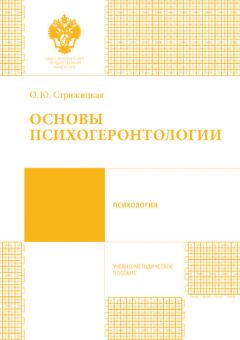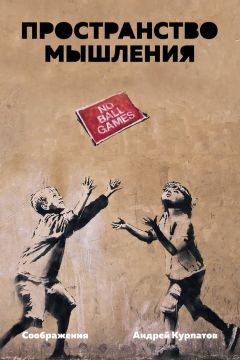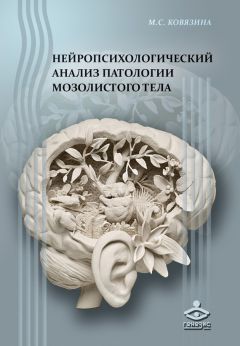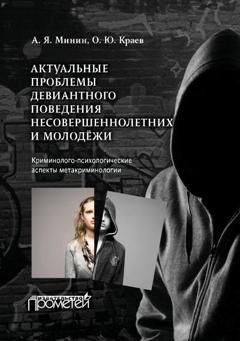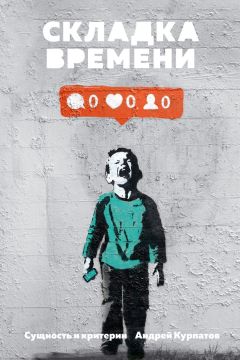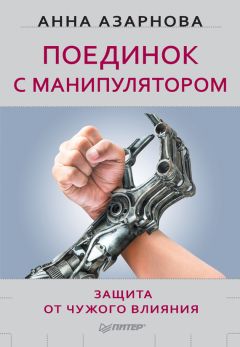Jacob Feldman - Films and Levels – 3. Humans and Angels
Все авторские права соблюдены. Напишите нам, если Вы не согласны.
Описание книги "Films and Levels – 3. Humans and Angels"
Описание и краткое содержание "Films and Levels – 3. Humans and Angels" читать бесплатно онлайн.
In this sequel book author analyzes 15 films (1988—2016) with his own instruments of analysis. He uses concept of levels described in the book «Human Being Theory (for Dummies)». You may consider it as a «theory-and-practice of everyday life’s psychological analysis for everybody».
Films and Levels – 3
Humans and Angels
Jacob Feldman
© Jacob Feldman, 2017
ISBN 978-5-4483-9117-0
Создано в интеллектуальной издательской системе Ridero
Preface to the English edition
Glaring effulgence of Donald Trump from the political Olymp does not change the fact that Vladimir Putin and his propaganda-machine today is now the main threat to the all civilized world. The duty of every intelligent man now is to speak out against this machine, to beat her to death. This is the first theme of the entire series.
But if this is a war, if we face a war machine – how can we oppose it? We can counter it with the latest and strongest methods of data analysis – of information emitted, transmitted, distributed, perceived, understood.
At the beginning of the second book, I have used this image: the broadcast runs at a certain frequency, and the receiver should tune to that frequency.
Human communication always runs at certain frequencies – levels. Only in the human communication has precisely 8 available levels, numbered from 1 to 8. The first book describes it as a theoretical model. Next books gave examples of movies on all levels and with various combinations of levels.
The second leading motif of the series is as follows.
Russian speaking intelligent-and-educated Homo sapiens had not found yet a place where they could unite all good people – and keep out idiots and crooks.
The problem is not technical; it is about meanings and values. I would really like to create such a platform – with books – and with a discussion of these books.
Just as cities are usually built near the water, and industrial enterprises – near cheap sources of energy, platforms for serious discussion of serious issues should be located – where? Next to the new global producers of meanings.
Today, the world’s best producers of a global sense are the American moviemakers. Analyzing the conflicts and problems embodied in the American cinema over the past 30 years, I launch new discussions.
This sets the semantic nature of the place – speaking in the language of my previous books – the sixth and the eighth level of communication and thinking. Sixth – to know how to articulate their thoughts and justify them. Eighth – to know how to take into account the interests and opinions of as many potential interlocutors, opponents.
Philosophy – from the time of Socrates – more often pretends to be an environment of free dialogue than it truly is. I assume that Socrates himself was fond of free discussion, but Socrates of Plato’s dialogues acts as a skilled manipulator. Manipulation and free dialogue are incompatible.
By the way, low culture of dialogue has led the Western world to the two shocking discoveries about itself: neither Trump nor Brexit have been predicted by sociologists. Why? Because one half of society were persistently ignoring the other half – and only now the first half realizes that the other half exists too.
So two goals – the resistance to evil and uniting the forces of good in the civilized (6—8) dialog – converge – and that makes me move on, publishing one book after another.
Children and Adults
The Little Prince, 2015
Synopsis
The little girl lives with her mother. They apply for a prestigious school for the girl, but fail at interview.
Now Mother insists that girl must work all summer to get ready for the next try. Mother declares hard schedule for the girl. But she goes to work, and the girl accidentally happens to visit an old neighbor, who tells her «tale of the Little Prince.»
The old man lives alone, he has no friends or relatives, nobody in all the world. One evening he is taken to the hospital. Early in the morning, the girl makes the mother to visit the old man.
Between these two events, she sleeps and has a dream in which she meets a characters of the tale, meet the Prince and help him to return home.
Between tale and reality
The filmmakers took over a difficult task: take a classic literary tale of Antoine de Saint-Exupery, written in 1943, and incorporate it into a modern story of life of the little American girl.
This is a very hard task. To solve it they have to sacrifice what I call «self-consistency». On this occasion, I had a few questions. On some of them, I thought, I found answers, to other – no. These questions and these answers I lay out them below.
First question. The girl was not enrolled at school after the first interview, but she was accepted without another interview later. How it could be? To answer this question we need some knowledge of American life.
As a rule, children who live in a certain district are getting enrolled into this district’s school without taking exams. Children from outside the district cannot get into the school anyway. The case that a «nonresidents» have an opportunity to get into this specific school through the interview is a rare exception.
Therefore, plan B was about a moving to this specific district. Good district school is usually a sign of rich households’ area. Hence, rent a house is more expensive here. Mom’s salary is the only source of family’s budget, Dad does not pay. To keep within the budget, the mother decides to move into the only house with relatively low rent. Rent is low because the house has a bad reputation. And this is because of old neighbor which is presumably mad.
The old neighbor’s house is very old too. Probably, all old houses around were destroyed some years ago and new standard comfortable houses were built instead. A similar situation is presented in the film «Up». It is likely that the old man lives here all his life.
Second question. It seems that the old man never had a wife, children, at least in the film there is not a word about them, about the parents or other friends or relatives. But the old man is not upset, he builds his fairy world for himself «as he was a child.» That is crazy.
But he does not want to be crazy. He tries to make friends with everyone who lives next door, but they refer to him as to the merits of a lower order. It is possible that the old man is rare – by the standards of modern America – taking a shower, and he smells bad.
Third question. The girl has a cellphone; the old man has not, even a wired one. How he gets a food? He has no driver license. Does he walk to the food store? No. The food store is too far from the house. He does not walk far. What does he eat? We know about sandwich he keeps in a pocket for many days. Probably somebody had have license and drove the car, bought and brought food. Who? His wife? Probably not long ago she died. Probably. Probably the only food in the house were from that time.
Who called from him to an ambulance? Nobody visited him, and he has no phone in the house. Maybe he fainted from hunger directly on the postman? And the postman called to the ambulance? Maybe.
The fourth question. Book pages were being crumpled and torn before, but they look like new in the gift copy.
The fifth question. When Mom discovers the deception, and makes the girl to study round the clock – does she stay at home or go to office as usual? If she goes to office, then how she provides the real pressure? Unclear.
The sixth question. On the last day of vacation girl returns home with mother. From where? From the store, where they bought a school uniform? Maybe.
The seventh question. When a girl comes to school and there at the blackboard is trying to tell the audience about the elephant and the boa constrictor, the faces of teachers and children are as sad and hopeless as that of officials in a dream. Does the author understand, that here there is a problem, the solution of which he does not know?
The eighth question. In the last two weeks a girl reads a lot of thick giant books. What for? There will be no exam ahead. What for?
The tale in a book and in a movie
The filmmakers took a noble task – to return the tale of Saint-Exupery into the focus of public discussion. And not only for the reading public, not only into the focus of discussion of adults, but into the focus of family discussions for children with parents. This is a family film and young viewers will not be indifferent to the fate of the little girl. Did they succeed? Yes, they did.
Another question – how images of the Exupery are related to those presented in the film. Let me remind you that some of the images from the book are omitted in the film («lamplighter», for example), and some others are added («teacher» in a dream).
Here we can talk about two different worldviews – one in the book and other in the film.
Europe and USA
What makes the Little Prince in the book to die from a snakebite? The logic of the tale does not require this.
The Little Prince flew from home in a fairy way – with migratory birds – and he could return home with some other fairy way. Apparently, Exupery needs this event of death to make reader to think about the problem of death.
Therefore, tale of Exupery is for adult reader, children do not like the book. It is difficult and unpleasant for children to discuss the death.
The pilot did not die in the film – although he hints to the girl at this option. And in the movie Mr. Prince returns to his planet. The rose is already dead – but this death is not a tragedy. At least for modern child.
America does not think of death. America is young and optimistic. Europe is built around death and sorrow. She is old.
So, what all this stuff is about?
Authors – the author of the book, and the authors of the film – appeal to all the people, having their own inner world – people who have the level of 6. Especially for people-6, authors discuss the different roles and role-playing systems.
They do not deny the need for role-playing systems. For example, «to water rose and to clean land from weed baobabs» – these are reasonable roles. However, there are roles that have lost meaning («lamplighter» in the book), have closed themselves egoistically («ambitious man»), some are useful at some extend («king as elevator operator»). There are a lot of destructive roles in the world (teacher-tyrant, greedy capitalists).
The authors suggest people-6 to analyze roles around… and maybe even come up with new roles now missing. So the girl came up with two new roles: (1) to visit the pilot in the hospital, give him flowers and the tale as a book; (2) to tell the schoolmates about the boa constrictor and the elephant and – perhaps – about other book characters.
Summary
The authors believe that the world is built of roles. But we need to be able to analyze roles, to reject some old, to add some new. A sort of a rebellion on the knees.
Unfortunately, there is no good solution for this problem. We have too few degrees of freedom. Mom is tied to the office, girl is tied to the school, the pilot is tied to the bed in hospital (We could hope he will not die soon).
Mary and Max, 2009
Synopsis
In Australia, in a small town on the banks of an ocean, lives a family: little Mary, her father and mother. Unfortunately, they do not communicate with each other and everyone lives in one’s own little world.
Mary goes to school, but in school life is not much better. Accidentally, being with her mother in the post office, Mary discovers a directory that lists addresses different people living in the USA. A piece of random page of this book happened to be jammed in her hand.
The deficit of meaningful communication Marie feels like a personal problem, that’s why she decides to write a letter to a stranger, whose address was in her hand.
The stranger happens to be an old fat man with Asperger’s syndrome. Correspondence starts. After that… go and see it by yourself.
Levels
Max has 1 (gluttony) and 2 (cyclic time), and 6 and 7 (he has logics, he reads serious scientific books and shows non-trivial wit).
Mary has 3456 (scientific mind, but without creativity and paradoxes). Parents have 1245 (and have no signs of 3, 6, 7 and 8). Her husband has 2345.
They could cooperate, but Mary wants more. She is attracted to Max because of his 6—7 levels (for her 5—6 this is a pleasure). But she has no 8, to anticipate Max’s reaction to her book.
The breach with Max is her tragedy. And for Max this is a tragedy too, because now he has no place for his 6—7 too.
In the university Mary’s 6 makes very good impression. But none of the others can not communicate with Mary meaningfully, including Damien. Probably because Mary is melancholic + sanguine, melancholic dominates. Max is phlegmatic, he can wait.
The conflict becomes a tragedy when Mary tells Max that she has published a book in which he described Max as a special psychological type. Max falls into despair, horror, and stops to reply.
The book publishing is a 34-event. Max must reply at 45, but he cannot act at these levels. He falls into panic (first level). From this trauma, he will never resurrect.
Конец ознакомительного фрагмента.
Текст предоставлен ООО «ЛитРес».
Прочитайте эту книгу целиком, купив полную легальную версию на ЛитРес.
Безопасно оплатить книгу можно банковской картой Visa, MasterCard, Maestro, со счета мобильного телефона, с платежного терминала, в салоне МТС или Связной, через PayPal, WebMoney, Яндекс.Деньги, QIWI Кошелек, бонусными картами или другим удобным Вам способом.
Подписывайтесь на наши страницы в социальных сетях.
Будьте в курсе последних книжных новинок, комментируйте, обсуждайте. Мы ждём Вас!
Похожие книги на "Films and Levels – 3. Humans and Angels"
Книги похожие на "Films and Levels – 3. Humans and Angels" читать онлайн или скачать бесплатно полные версии.
Мы рекомендуем Вам зарегистрироваться либо войти на сайт под своим именем.
Отзывы о "Jacob Feldman - Films and Levels – 3. Humans and Angels"
Отзывы читателей о книге "Films and Levels – 3. Humans and Angels", комментарии и мнения людей о произведении.






